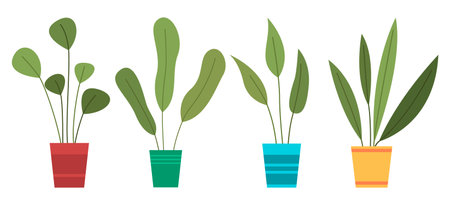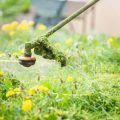Introduction to Rewilding in the UK Context
Rewilding has emerged as a transformative approach to restoring natural ecosystems, and in the British context, it holds particular significance. As the UK’s landscapes have become increasingly managed and urbanised over centuries, native flora and fauna have faced considerable declines. Rewilding seeks to reverse this trend by allowing nature to take its course, encouraging the return of wildlife and the regeneration of native habitats. While large-scale rewilding projects often make headlines, the role of domestic gardens is frequently underestimated. In fact, with an estimated 23 million gardens across Britain, these private green spaces collectively represent a vast potential habitat network. By embracing rewilding principles in our own back gardens, we can contribute meaningfully to national biodiversity targets, support pollinators, create wildlife corridors, and foster healthier local environments. This guide will delve into practical steps for rewilding your British garden, recognising that even modest plots can make a tangible difference when viewed as part of a broader ecological tapestry.
Understanding Your Local Ecosystem
Before embarking on your rewilding journey, it is essential to get to grips with the unique characteristics of your local British ecosystem. Each region in the UK has its own blend of native species, soil conditions, and microclimates that will influence what thrives in your garden. Start by researching which plants, insects, birds, and mammals are indigenous to your area. Local wildlife trusts, botanical gardens, and council biodiversity officers are excellent sources of information. You may also wish to consult online databases such as the National Biodiversity Network Atlas or the Royal Horticultural Society’s plant selector tools.
Researching Native Species
Focus on understanding which flora and fauna are considered native—these species have evolved alongside each other and support a balanced ecosystem. Here is a simple approach for gathering relevant data:
| Resource | How to Use |
|---|---|
| Local Wildlife Trusts | Attend walks, talks, or workshops; access regional species lists |
| Online Databases (e.g., NBN Atlas) | Search by postcode to find records of native species |
| Biodiversity Action Plans | Check council documents for priority habitats and species |
Assessing Soil Types
The foundation of any rewilding effort is healthy soil. Understanding your garden’s soil type—be it clay, loam, chalky, sandy, or peaty—will help you select plants that thrive naturally and support local wildlife. A basic soil test kit from a garden centre can reveal pH levels and texture. Alternatively, try the “jar test”: fill a jar with soil and water, shake it well, then let it settle to see the proportion of sand, silt, and clay.
Common British Soil Types at a Glance
| Soil Type | Main Characteristics | Example Native Plants |
|---|---|---|
| Clay | Heavy, retains moisture, nutrient-rich | Ladies smock, meadow buttercup |
| Sandy | Free-draining, warms quickly, low nutrients | Sheep’s fescue, bird’s-foot trefoil |
| Chalky/Lime-rich | Alkaline, stony texture | Cowslip, wild marjoram |
Observing Existing Wildlife
An effective way to fine-tune your rewilding plan is simply to observe what already lives in your garden. Spend time noting which birds visit throughout the day or which insects frequent certain flowers. Look for evidence of hedgehogs (droppings or tracks), butterflies (caterpillars or adults), or even bats at dusk. These observations will guide you in enhancing habitats for existing residents while introducing features that attract new ones.
Tip:
Keep a simple logbook or spreadsheet of wildlife sightings over several weeks. This baseline record will help measure the impact of your rewilding efforts over time.

3. Planning and Preparing Your Garden Space
Before embarking on your rewilding journey, it’s vital to lay a solid foundation by carefully planning and preparing your garden space. This process starts with a practical assessment of your current landscape. Spend some time observing the conditions of your garden—note areas that are sunny or shady, wet or dry, and identify existing plant species, wildlife visitors, and any problem spots such as compacted soil or invasive plants.
Assessing Your Garden’s Baseline
Begin by mapping out your plot, however large or small, using simple sketches or digital tools. Walk around and record what you see: Where does moss thrive? Which corners feel lifeless? Are there hedges, mature trees, or patches of wildflowers already present? Take photographs for reference. This baseline survey is essential to track progress and set realistic goals.
Setting Rewilding Goals
Next, reflect on what you hope to achieve. Is your aim to attract more pollinators like bees and butterflies? Do you want to create a refuge for birds or amphibians? Perhaps you wish to reduce mowing and maintenance altogether. Prioritise objectives based on the size of your garden, the local climate, and how much time you can commit. A small urban plot might focus on a mini-meadow and a log pile, while a larger suburban space could accommodate native hedgerows or a wildlife pond.
Dealing with Lawn Areas
Lawn management is central to most British gardens. Consider reducing lawn size by allowing sections to grow long, sowing native wildflower seeds, or replacing grass entirely with meadow mixes suited to British soils. If you prefer a tidy appearance at the front, experiment with “no-mow” zones at the back or edges—these wilder strips quickly become havens for insects and small mammals.
Understanding Local Council Regulations
Before making significant changes, check with your local council regarding regulations on garden alterations, tree removal, ponds, and compost heaps. Some councils have guidelines about planting near footpaths or managing invasive species like Japanese knotweed. It’s wise to stay informed—many local authorities actively support biodiversity initiatives and may offer grants or advice for rewilding projects.
Summary
By taking these practical steps in assessing your garden’s baseline, setting tailored goals, thoughtfully dealing with lawns, and understanding local rules, you will be well-equipped to transform your patch into a thriving oasis for British wildlife.
4. Selecting Native Plants and Creating Habitats
Choosing the right native plants and building diverse habitats are fundamental steps in rewilding your British garden. By favouring species naturally found in the UK, you will provide food and shelter for local wildlife, support pollinators, and contribute to a resilient ecosystem.
Choosing British Native Trees, Shrubs, and Wildflowers
Selecting native plants ensures that your garden becomes a genuine haven for indigenous species. Below is a table outlining some recommended options for different plant categories:
| Category | Recommended Native Species | Wildlife Benefits |
|---|---|---|
| Trees | Rowan (Sorbus aucuparia), Silver Birch (Betula pendula), Hawthorn (Crataegus monogyna) | Berries for birds, shelter for insects and small mammals |
| Shrubs | Dog Rose (Rosa canina), Hazel (Corylus avellana), Guelder Rose (Viburnum opulus) | Nesting sites, nuts and hips for birds and small animals |
| Wildflowers | Oxeye Daisy (Leucanthemum vulgare), Red Campion (Silene dioica), Cowslip (Primula veris) | Nectar sources for bees, butterflies, and other pollinators |
Creating Wildlife Habitats
Diverse habitats attract a wider range of wildlife. Consider incorporating the following features into your garden:
Wildlife Ponds
A pond doesn’t have to be large—a small water feature can dramatically increase biodiversity. Use gentle slopes so creatures can enter and exit safely. Avoid introducing ornamental fish which may eat amphibians or their eggs.
Log Piles and Dead Wood
Pile logs or branches in a shady corner to create homes for beetles, fungi, hedgehogs, and amphibians. Dead wood is especially valuable for insects and forms the basis of many food chains.
Mini-Meadows
Convert a patch of lawn into a mini-meadow by sowing native wildflower seed mixes or simply letting the grass grow longer. Mow only once or twice a year after seeds have set to encourage a rich tapestry of wildflowers and grasses.
Quick Tips for Habitat Creation:
- Group different plant types together to mimic natural woodland edges.
- Use mulch from fallen leaves or cuttings to enrich soil naturally.
- Add stones or log piles near ponds as basking sites for frogs and newts.
- If space allows, leave some areas untidy—nature thrives on messiness!
By thoughtfully selecting native plants and creating layered habitats, your British garden will soon buzz with life and become an integral part of the wider landscape restoration movement.
5. Encouraging Wildlife and Supporting Natural Processes
Transforming your British garden into a haven for biodiversity involves more than just planting native species. It requires creating an inviting environment for local wildlife and learning to step back, allowing nature’s own rhythms to take the lead. This approach not only fosters a richer ecosystem but also reduces the need for constant human intervention.
Techniques for Attracting Pollinators
Pollinators like bees, butterflies, and hoverflies are crucial to healthy gardens. To attract them, plant a variety of nectar-rich native flowers such as foxgloves, knapweed, and comfrey. Aim for blooms throughout the year—snowdrops in late winter, bluebells in spring, and asters in autumn. Avoid pesticides and leave some areas unmown or untidy; dandelions and clover can be vital early food sources.
Welcoming Birds to Your Garden
Birds benefit from layered planting: mix hedges of hawthorn, blackthorn, and holly with open lawns and dense shrubs. Install bird boxes suited to local species (for example, small-holed boxes for blue tits). Keep bird feeders clean and stocked with a mix of seeds, suet, and mealworms. Provide shallow dishes or small ponds for drinking and bathing, ensuring cats cannot easily ambush visiting birds.
Making Space for Hedgehogs
Hedgehogs are a beloved feature of British wildlife but their numbers are declining. Create ‘hedgehog highways’ by cutting small holes at the base of garden fences (about 13cm x 13cm) to allow free movement between gardens. Leave leaf piles and log stacks as safe places for nesting and hibernation. Avoid using slug pellets or netting that could harm or entangle these helpful insectivores.
Boosting Insect Diversity
A rich insect population underpins your whole garden ecosystem. Build bug hotels from hollow stems, twigs, bricks with holes, and pine cones. Allow some wood to decay naturally in shaded corners—deadwood is invaluable for beetles and other invertebrates. Plant wildflower patches or let part of your lawn grow long to provide cover for grasshoppers, crickets, and moths.
Embracing Natural Ecological Cycles
Perhaps the most challenging aspect of rewilding is learning when not to intervene. Resist the urge to tidy fallen leaves too quickly; they shelter insects over winter and feed soil microbes. Let seed heads stand through winter—they provide food for finches and shelter for larvae. Observe before acting: sometimes what looks messy is vital habitat in disguise. By reducing mowing frequency and chemical use, you enable natural processes like decomposition and predation to balance your garden’s micro-ecosystem.
Ultimately, supporting wildlife in your British garden is about patience and trust—trusting that given time and space, nature will return resilience and beauty beyond our expectations.
6. Overcoming Common Challenges
Tackling Invasive Species
One of the most significant hurdles in rewilding a British garden is managing invasive species. Plants like Japanese knotweed, Himalayan balsam, and rhododendron ponticum can quickly take over, outcompeting native flora and threatening local biodiversity. To tackle these, regularly inspect your garden for early signs of invasives. Remove problem plants by digging up roots where possible, and dispose of them responsibly—never add them to your compost heap. If the infestation is severe, consult with local environmental authorities or seek professional help to ensure eradication methods are effective and environmentally sound.
Managing Garden Pests Naturally
Rewilded gardens often attract more insects and wildlife, which can sometimes lead to an uptick in garden pests such as slugs, snails, or aphids. Resist the urge to use chemical pesticides; instead, encourage natural predators like hedgehogs, frogs, birds, and ladybirds by providing habitats such as log piles, ponds, and bug hotels. Companion planting—growing pest-repellent plants like marigolds alongside vulnerable crops—can also help maintain balance without harming beneficial species.
Balancing Rewilding with Neighbours’ Expectations
British neighbourhoods often value tidy lawns and well-kept borders, so a wilder approach may raise eyebrows or even prompt complaints. Open communication is key: explain your intentions to neighbours and highlight the benefits rewilding brings to pollinators, birds, and the local environment. Keep boundary areas neat—such as mowing paths or maintaining trimmed edges—to show consideration for neighbouring properties while allowing wild spaces to flourish elsewhere in your garden. If you’re part of a residents’ association or similar group, consider organising a wildlife-friendly gardening event to foster community support.
Practical Tips for Success
- Stay informed about local regulations concerning non-native species and garden management.
- Join local conservation groups for advice on native plants and wildlife-friendly practices.
- Be patient—rewilding is a gradual process that may take several seasons to show results.
Embracing Imperfection
Remember, no two rewilded gardens look alike. Embrace the unpredictability and occasional messiness as part of nurturing biodiversity. With patience and care, you’ll overcome challenges and contribute positively to Britain’s natural heritage.
7. Monitoring, Maintaining, and Sharing Progress
Rewilding your British garden is not a one-off task; it is an ongoing process that thrives on observation, adaptation, and connection with others. To ensure your efforts have the greatest impact, it’s essential to monitor progress, maintain your space thoughtfully, and share your experiences with the wider community.
Citizen Science Projects: Contributing to National Data
One of the most effective ways to track biodiversity in your garden while contributing to larger conservation efforts is by participating in citizen science projects. Organisations like the RSPB Big Garden Birdwatch, BeeWalk, and OPAL Surveys provide platforms for you to log sightings of birds, pollinators, amphibians, and more. These schemes rely on ordinary people across the UK to gather valuable data on wildlife trends. Even simple observations – such as noting the first bumblebee of spring or the return of hedgehogs – can feed into national records and influence conservation policy.
Keeping Garden Records: Building Your Own Biodiversity Log
Maintaining a dedicated garden journal or digital log is both rewarding and practical. Documenting what species you see, when particular plants flower, or which habitats attract the most visitors will help you understand seasonal cycles and long-term changes in your garden. Consider using a simple notebook or apps like iNaturalist to catalogue plants and animals. Regular entries might include weather patterns, new plant introductions, pest outbreaks, or notable wildlife interactions. Over time, these records become a rich resource for personal learning and future planning.
Tips for Effective Record-Keeping:
- Set aside a few minutes each week for observations.
- Photograph unfamiliar species for later identification.
- Record both successes (e.g., frogspawn in the pond) and challenges (e.g., invasive weeds).
Engaging with the Wider Community
Rewilding is most powerful when it spreads beyond individual gardens. In the UK, local gardening groups, wildlife trusts, and online forums offer spaces to exchange knowledge, seeds, or even surplus native plants. Sharing your progress on social media using hashtags like #RewildYourGarden or joining local WhatsApp groups can inspire neighbours to start their own projects. Consider organising an open garden day or hosting a talk at your village hall to showcase what rewilding looks like in practice.
Why Community Matters:
- Biodiversity corridors are more effective when neighbouring gardens participate.
- A collective approach can tackle larger issues such as supporting pollinators across entire streets or villages.
- Sharing failures as well as successes builds resilience and realistic expectations.
By monitoring your progress methodically, maintaining accurate records, and connecting with others passionate about British biodiversity, you contribute not just to your own patch but also to a growing national movement. Every small action helps restore our natural heritage—one garden at a time.

